
Fine-grained with understated texture and consistent color. Takes stains and dyes well. Medium to light density and consistent structure and quality make this a solid choice for an understated body wood.

The species pterocarpus indicus produces lumber that trades under the common name "narra". Narra is a nice red-brown color and its texture is not unusual for the pterocarpus genus, which contains padauk and kiiat. Its interlocked grain produces ribbon stripe figure in some quartersawn pieces. Indicus is probably better known for the burl it produces. This burl trades as amboyna burl and it's intense figure and deep crimson color are striking. The sapwood is a sharply contrasting cream color, that creates a pleasing look when bookmatched. Amboyna burl is unique and rare, and as such it fetches a premium price.
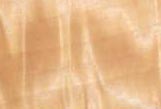
This african wood has a cream-yellow heartwood not dissimilar to maple. The wood has a medium-fine texture with a medium luster to go along with a medium (low) density. This wood is really medium! It can, however, be found with curly or mottled figure, especially in veneer form, in which case it is quite attractive. Aniegre does not find its way into guitarbuilding too much.

Coarse grained with distinct grain. Ash is distributed around the globe but the most ubiquitous species is fraxinus americana, white ash. Americana is the wood of choice for baseball bats and is used extensively in millwork and as flooring. A less common species fraxinus nigra, black ash, is sometimes selected and graded for density. Black ash trees grown in swampy areas often produce very lightweight lumber which was made famous by Leo Fender and is known as swamp ash. Lumber distributors have since caught on and the high demand for swamp ash lumber has allowed the price of select swamp ash to skyrocket
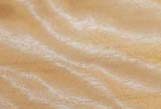
Another african wood, cream to pale yellow in color. This stuff is medium-light in density with a medium to fine texture. Grain is interlocked, producing ribbon stripe, mottle, or wavy figure depending on how the wood is cut. This stuff can be pretty stunning to look at, and excellent examples of intense figure can be found easily in veneer form. Heavy figure is less frequently seen in lumber form.
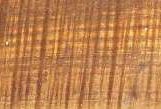
Australian blackwood is in the same genus as koa. Not surprisingly, it shares many of koa's qualities. It is a golden-brown, medium density hardwood that takes a natural glow when polished and finished. It can be found with a stunning fiddleback figure. This often-overlooked wood can be found in general more reasonably priced than its cousin koa.

Basswood is a favorite wood of carvers. It is easy to work, has a consistent, unremarkable grain, and can be had in large billets. It is of the right density to be used in guitar bodies and often is when the body is to be painted (since it is so unremarkable to look at anyways).

Fairly fine-grained with a light orage to salmon color. Beech shows a distinct pore pattern. Beech is commonly used in lower-end solid wood furniture like stools and chairs. The most common examples are european varieties; some can be found spalted in which case they make attractive tops.
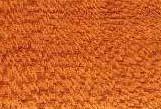
Called beefwood because of it's vague resemblence to marbled beef, this wood is red-brown with a very distinct ray-fleck pattern. Rays are tightly packed in quartersawn boards, large and widely distributed in flatsawn boards. Very similar to lacewood and leopardwood.
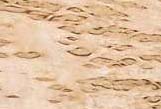
Masur birch displays a strange flecked figure not dissimilar to the bird's eye figure found in some maples. It is thought that this figure is caused by specific stresses caused by insect attack.

Bloodwood is deep red. Very dense and can show roey figure in quartersawn specimens due to interlocked grain. Excellent color that resists browning typical of padauk makes it excellent as a red accent wood.
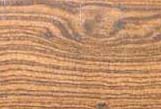
An attractive, oily wood similar in appearance and characteristics to the rosewood genus. Yellow with black streaks. Quite heavy and hard, bocote takes a toll on tools as well as abrasives (due to the high oil content). Takes a fine polish.

A handsome african species that is tough and heavy. The trees grow to be extremely large and slabs 3' wide and wider can be found. Grain is interlocked and texture is fine; mottle and roey figure is fairly common in quartersawn boards, which are not difficult to find. Pommele, curl and quilt figure is uncommon but very dramatic in appearance when they can be found.
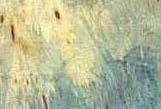
Buckeye lumber is relatively unremarkable and generally unimportant to luthiery. But the root balls of this tree can grow to impressive sizes in some places and can produce substantially sized pieces of lumber. The wood of the root ball resembles burl of a yellow cream color. When allowed to sit in a moist environment, blue-gray discoloration will occur. So-called buckeye burl can be extraordinary in appearance. It is extremely low density and as such should not be used anyplace with a structural role; it is so lightweight that I prefer not to even use it beneath the bridge due to its poor resonant qualities.

Butternut is a tan-colored species of the walnut genus. It's texture and properties are almost identical to american black walnut, perhaps a bit less dense on average. It produces a pleasing nutty aroma when milled and works easily. I am a big fan of butternut as a body wood.
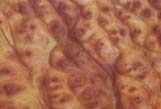
Camphor is an african wood that is historically important for the oil it produces (it can now be produced synthetically). Camphor oil is extremely aromatic and this smell is abundant when camphor is milled. Like buckeye, camphor is most significant to luthiery for its burl. Camphor burl is pink to pink-red with various types of burl figure that can be dramatic in appearance.
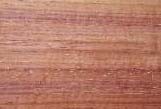
Canarywood is a very resonant, interesting exotic hardwood. Its color ranges from yellow to yellow-brown with some specimens exhibiting vivid red streaks.
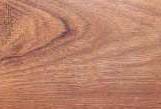
Chechen is an interesting wood that ranges from dark brown to light brown with dark grain figure. Often the lighter-colored pieces exhibit a curl figure. This tough, hard wood takes a fine polish.

Cherry is a common wood used in early american fine woodworking. Perhaps the most sought-after wood in furnituremaking was mahogany. Cherry wood had roughly the same color and so cherry it was that cherry became a popular american substitute. It is harder than mahognay. It can be found with a broad curl figure and curly cherry remains popular in fine woodworking. Its use is less common in luthiery, although its density makes it an acceptable body wood.
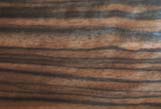
Macassar ebony originally referred to the celebica species although it is commonly used now to refer to any ebony that is striped in appearance. Celebica has wide, brown to gray-brown streaks accented with typical jet-black color of the ebony genus. Spiderwebbing is common. In recent years, macassar has become increasingly more easy to find than black ebony, especially in quartersawn and wide boards. Takes a brilliant polish.

Black ebony at one time was assumed to be the same as Gaboon ebony (diospyrus crassiflora). The availability of true Gaboon has gotten very spotty and as such it has become perfectly acceptable to use any diospyrus where black ebony is needed. This includes indian and ceylon species. In truth, the ebonies all have desirable qualities and can generally be used interchangably without issues. This is considered the wood of choice for upright fingerboards and, by extension, is often considered the wood of choice for fretless electric basses. It is dense, hard, and resists wear well. Almost all black ebonies are exceedingly difficult to find in wide or long boards.

Elm is a species with an interesting history. American elm was once quite common in north america. Colonists from Europe brought with them Dutch elm disease, a blight to which american elm was completely incapable of resisting. As a result, american elm is all but extinct in north america. Much of the elm you will see is european as a result. The wood is relatively tough, and light brown similar to butternut. Elm exhibits various degrees of burl. Light burl figure is sometimes called "pippy".

Eucalyptus refers to a whole genus of trees. There are many species of eucalyptus including blackbutt (pilularis), red river gum (camaldulensis), karri (diversicolor), tasmanian oak/stringybark (various), white-topped box (quadrangulata), and jarrah (marginata). Many of them exhibit different kinds of figure including pomelle, roey figure, and mottle. The genus is native to Australia but some species have been introduced to the southwest United States and abroad. There, the wood may be referred to simply as eucalyptus. Like many aussie woods, some species of eucalyptus are becoming more widely available in the states.

This is a wood I've never specifically seen in a lumberyard before but is documented in both Corkill and Lincoln. Their numbers vary; Lincoln lists its specific gravity as 0.59 while Corkill has it at 0.75. The former puts it in a density class with mahogany, the latter with hard maple. Lincoln's plate shows a heavy ray-fleck pattern on quartersawn wood. The wood is golden- to dark brown. Lincoln lists the wood as stable with moderate strength characteristics.

Goncalo is typically a light peach/orange color. It frequently has brown streaks and occasionally has curl or mottle figure. It is dense, oily, and waxy. It takes a fine polish and will darken with UV exposure.
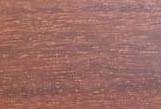
Granadillo is a brown, variegated wood that makes a good rosewood substitute. It is relatively dense and tough, exhibiting a consistency of well-behaved, straight grained specimens.

Holly is probably the whitest wood you'll ever see. It's whiter than whitewood (which is really not all that white) and the whitest maple. You see, it's white. It has a fine texture but is hard to find in large, clear pieces. It is reported to be hard and tough, although the pieces I have seen did not seem to be particularly hard or tough. Also reportedly difficult to dry without splitting and cracking and not particularly stable.
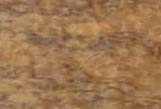
Imbuia is a medium-brown wood with a ridiculously spicy scent. It can be found with curl or burl figure. Some specimens have intersting dark streaks and in some example the curl figure can be as tight and intense as the finest curly maple. Texture is medium to fine, with good finishing properties.
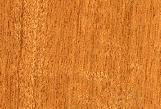
Iroko is a yellowish african wood that can exhibit roey or mottle figure. The grain can be interlocked. It is considered a fairly good outdoor wood, although it's availability in the US is limited so it is generally not used for that purpose here much.

Jatoba is a dense, light brown wood that can be easily found in wide, long, and thick boards. It is very hard and stable, and quartersawn boards are readily available. This wood is tough and strong, and I love it as a neck stringer to accent both wenge and maple. Mottle, roey, and rarely curl figure can be found in jatoba, occasionally strong enough to make it suitable for a figured top.
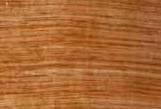
Kiiat is a pterocarpus, along with the padauk species. It has a light tan to orange color with some variegated figure. It is light enough in density to serve well as a body core and has a pleasing tap tone. The availability rating of "rare" is misleading. It is quite hard to find but the species does not seem to be threatened or rare. Only its availability in US lumberyards seems to be rare.
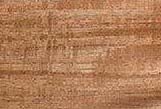
Koa is a pleasing brown wood with a warm glow when finished. Koa only grows in Hawaii. As you might have guessed, its availability is limited. Furthermore, it is generally overtaxed as it is quite beautiful. It can be found with intense curl and prices can be astronomical for the most unique specimens.

Lacewood is an Aussie wood that is orange with large, pronounced meduliary flecks. Meduliary rays are columns of wood fiber that run transversely to the main fibers. When cut, the rays can produce visible fleck patters in lumber. In quartersawn maple lumber, the ray flecks show up as little brown specks. In quartersawn oak, the rays are lighter colored and larger. In lacewood, the flecks are visible in both quartersawn and flatsawn lumber, producing a very unusual and interesting look.
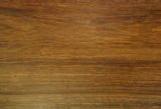
Lignum vitae is an extraordinarily heavy and oily wood. It sinks in water, and it is so oily that it was at one time used in machinery for its self-lubricating qualities. It is one of the few woods with a green tint to it. I only use the stuff for nuts and saddles because it can be difficult to glue.
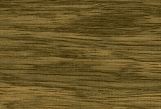
Limba comes in two basic varieties, white and black. It is also known as korina. Original Gibson Flying V guitars were white korina. The black variety is seeing a small resurgence in guitarmaking, particularly in bass guitars. It has unusual coloring which gives it a distinct appearance. Its weight and workability makes it well suited for bass guitar bodies.

Corkill writes that over 60 species are sold under the common name mahogany, but only thre genera are actually recognized as mahogany: khaya, swietenia, and entandrophragma. Each is moderately soft and lighweight, red-to-orange brown, and from trees that grow large in size. Khaya is not an exception, with interlocked grain sometimes producing ribbon figure on quarter and in rare instances, blistered or curl figure. Corkill also reports these species are prone to upset (cross fractures) and I can certainly verify this. None the less, khaya's light weight and ease of machining make it an excellent choice for bodies.
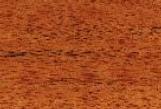
This is the wood considered by most to be the one true mahogany. As such, it is often called "geniune mahogany". This is probably because of the popularity and taxonomy of Cuban mahogany (swietenia mahogani), considered one of the finest furniture woods of the world before indiscriminate usage endagered its existence. Cuban mahogany now has restrictions placed on its usage, making macrophylla, or Honduras mahogany, the de facto standard for genuine mahogany. Honduras mahogany is a dream to work and takes a fine finish. It is easy to understand why Cuban, considered to be superior in workability and appearance, was so desirable for over 200 years.

Silica in the heartwood causes blunting of tools.
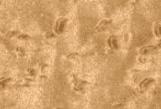
Bird's eye refers to a type of figure caused by conical depressions in the sapwood of living trees. Later growth follows these depressions, causing radial distortions in the wood fibre that resemble bird's eyes. The bird's eye figure shows on plain sawn or rotary-cut wood. Appears as flame on quartered surfaces. See hard maple for general properties.

Curl is also called flame and fiddleback. An undulating, 3d appearance caused by distortions in grain direction in the wood. Appears most frequently in soft maples. The undulation in grain direction makes curly wood difficult to plane. See soft maple for general properties.
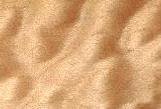
The appearance of 3-dimensional waves or folds in smooth wood surfaces is called quilt. This figure is very rare and very dramatic. The nature of this figure makes machining the wood exceedlingly difficult without tearout. See soft maple for general properties.

Spalt refers to a class of figures caused by a fungal infection in wood. The infection occurs after a tree is fallen, and causes discoloration and if left unchecked, degredation of the wood structure. Kiln drying will halt the spalting process but does not kill the spores. As such, it is very important to use a respirator and proper dust collection when working with spalted woods. See soft and hard maple for general properties of maple.
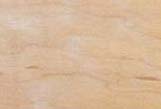
Acer saccharum, or sugar maple, is a Northeastern US/Canadian species from which most real maple syrup is derived. It is also among the hardest of the maples (also acer nigrum). Widely used for necks in stringed instruments, this wood is relatively stiff and stable, in good supply with a relatively reasonable price. Texture is fine and even, giving this wood a smooth feel and excellent finishing properties.
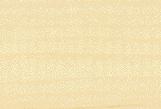
The two primary species of soft maple in the US are rubrum, red maple, and macrophyllum, big leaf maple. The luster of these woods is not as bright as hard maple and as their name suggests, they are not as hard and stiff.
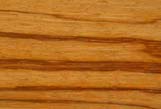
This unusual wood vaguely resembles zebrawood, but with fewer and more irragular streaks, which are lighter in color than that of zebrawood. The streaks meander and even cross in marblewood, which does not happen so much in zebrano. The wood is slightly coarse but tough and hard.

Myrtle is a pacific northwest (US) wood that is predominantly golden-brown to yellow-brown in color. It sometimes has darker mineral staining in black or green color and shows irregular/wavy grain with curl and/or burl figure in some cases. It is relatively hard and durable for a north american wood, exceeding hard maple in some strength properties.
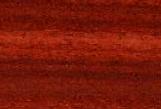
Padauk is a medium density hardwood growing in western africa. Trees can grow to be very large and as such wide, thick, and quartersawn lumber is easy to find. Freshly milled the wood is vibrant red to red orange. The wood turns brownish with exposure to sunlight. Grain is often interlocked producing ribbon figure on quartersawn surfaces. The dust is an irritant/sensitizer, and will get everywhere, including adjacent surfaces when sanding and finishing. Wear your shop clothes when you work padauk.

Pau ferro, also known as morado, is a name given to a handful of different species. I think the most common species is a machaerium, though I could be wrong. It is a handsome brown to red-brown wood with dark variegation similar in appearance to a rosewood. Indeed, it is often misleadingly labelled as "bolivian rosewood". Pau ferro has become an increasingly popular substitute for rosewood on guitars of any price, probably in response to the vulnerability of true rosewoods (in particular dalbergia nigra). This wood is quite suitable for fingerboards and can be found wide enough for tops and cheaply enough for necks. Its variegated grain makes it quite attractive flat cut, while its interlocked grain will sometimes produce ribbon stripe or mottle figure on quartersawn cuts. Hey, I think I like this wood!

Pearwood is a light-colored, very fine grained, hard wood. The wood is pink-brown to peach colored. It is sometimes dyed black as an ebony substitute for fingerboards on less expensive instruments. Larger pieces are harder to come by. Sometimes exhibits flame figure.

Persimmon, also called virginia ebony, is a true ebony. It is an unusual dense hardwood that grows in the united states. The US version produces fruits that are not generally eaten as the Japanes version (diospyrus kaki) are. Virginia persimmon is highly durable and has a high resistance to shock and as such was a favored wood for making golf clubs before the move was made to composites and metal "woods". It is servicable as a domestic fingerboard wood, although it is difficult to find suitably sized blanks as most standing persimmon trees are orchard trees, small and crooked.

Picana negra refers to species of cordia similar to bocote, but without the vivid yellow heartwood. Instead, picana has a brown heartwood, but with the same meandering black streaks as bocote. Thus, it is sometimes referred to as "poor man's bocote". It serves well anywhere bocote does: fingerboards, tops, and neck laminates.
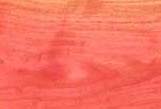
Pink ivory is, not surprisingly, a pink wood. You will often read that this wood is sacred to the Zulu people with a backstory of the penalty for outsiders cutting the trees being death, etc.. It is not clear that this true, and an entry on Wikipedia disputes it as an attempt to inflate the price. If so, it worked. The wood is extremely expensive and I'm not terribly interested in using this wood either way.

Purpleheart is purple. Surprise! It's also dense and tough, and full of silica which will dull your tools. It is a very popular neck stringer, and when figured lumber can be found with roey, curl, or broken stripe figure, it makes an attractive top wood.

Rambutan is a se asian wood that is similar in color to goncalo alves. It is perhaps a bit deeper in its orange color with less pronounced dark streaks. Rambutan can be found with a dense flame figure as deep as the nicest curly maple. I have used rambutan once, and it nearly destroyed my bandsaw; the wood is extremely dense and tough.

Most redwood you will find is lightweight, similar to most softwoods. It dents easily. Lumber from slower-growing specimens can be much more dense. The trees, of course, are among the most giant and long-lived in the world. The wood can be found with heavy curl, lace burl, and at times quilt or bird's eye. Curl is the most common figure and can be quite dramatic-looking over the deep red/brown color of the wood. It is also prone to cracking under stress, especially thin pieces and more especially curly pieces, where there are waves of runout.
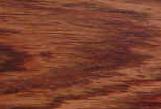
Amazon rosewood is a species of rosewood that shows up from time to time, but has limited availability as an alternative to Rio or East Indian. It is dark in color, with hints of purple or reds. It is oily, dense, and hard as are all the rosewoods.

Blackwood is a dark, black, heavy rosewood favored by wind instument makers. Some large slabs can be found but the wood is increasingly rare and large slabs are difficult to season without checking. Unusually hard and dense, african blackwood will run you broke at the lumber yard and at the sharpening center where your toasted bandsaw blades will need to go once you've cut into it.
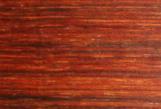
Cocobolo rosewood is a very popular species of rosewood that can vary between neon orange to brilliant crimson, to burgandy-red with black streaks. Occasionally flatsawn wood will show spiderwebbing and in rare instances small pockets of cluster burl or swirling figure are possible. It is an awesome wood to behold, but very oily, gumming abrasives with the quickness. Its dust is an irritant to almost everyone who experiences it, causing sneezing and runny noses to skin rashes or respiratory distress. My neighbor calls it "croakabolo" and its distinct smell is readily identifiable when it is being milled. Cocobolo is one rosewood that can be found fairly wide and clear.

Honduras is perhaps one of the more tame rosewood species, on average. It has a light brown color with darker streaks similar to morado, and sometimes shows hints of black or red. It is another popular wood in acoustic guitarmaking as it can be found wide enough in straight-grained specimens to make backs and sides out of. I have seen this wood exhibit amazing blister/quilt figure once but never again since; burl is also known to exist but only in rare instances. The wood is very dense and oily.
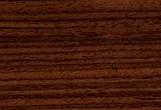
Indian is one of the more frequently used rosewoods in guitarmaking. It is one of the new standards for acoustic steelstrings and as such it is plantation grown to secure a steady supply. Bass makers utilize it for fingerboards. It is very oily and like all the rosewoods has an intense and often sensitizing fragrance. Gums abrasives very quickly. East indian is dark brown to purple brown with dark black streaks.
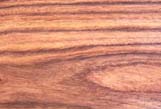
Kingwood is another typical rosewood, toward the heavy end of the scale, with the oily, dense, highly polishable characteristics of the dalbergia genus. It is vivid purple, not deep purple like purpleheart, with more red and pink content, contrasting against black streaks and cream-white sapwood. Kingwood is difficult to find wide and/or quartersawn and frequently large (or even small) boards are full of defects: checks, pith or knots. It is, however, not impossible to find boards wide and clear enough to make a top out of if you are willing to search and pay the eventual price.
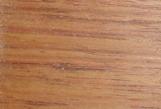
Madagascar rosewood, like all rosewoods is heavy, hard, and oily. This particular species is particularly prized for its resemblence to Brazilian (Rio) rosewood. It is chocolate brown with dark streaks and sometimes shows nice spiderwebbing like Rio.
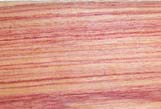
Another of the true rosewoods, tulipwood is hard and heavy and takes an excellent lustre when polished. It has a pleasing fragrance when milled, and it is pink/yellow with wide stripes of darker pink throughout. Tulipwood trees do not see to grow too large; it is rare to find pieces wider than 4" wide and longer than 3 feet. Many do contain pith or otherwise unusable sections. Tulipwood is a rare find in quartersawn, select stock and thus makes a unique fingerboard.
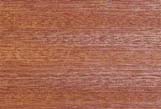
Sapele is similar to mahogany in texture and density. Like mahogany, it grows very large and thick, wide slabs are available even quartersawn. The grain is interlocked and quartersawn boards often show a heavy roe figure. Some has fiddleback figure, and occasionally mottled figure is possible. The color is less red/orange and more of a golden brown color than mahogany, but it can be easily mistaken for mahogany to the casual observer.

Sassafrass is s fragrant, coarse-grained american hardwood. Its essence is used in the beverage sassparilla. It is very similar in appearance to ash, perhaps a bit more porous and a shade darker. Its density is lower than ash, on average. It has a tan-grey color when finished. It is a fine body wood with qualities similar to swamp ash. It can be hard to source in thicknesses greater than 5/4, but there seems to be no real lack of supply, just lack of distribution and a lack of sawyers cutting thick stock.

Yellow-gold in color, ceylon satinwood gets its name from it's glowing lustre and the mottled, bee's wing, or roey figure that it can show, giving it a satin appearance. It is hard and heavy, and has narrowly interlocked grain. It is a wood that is not imported a great deal and finding it can be dicey; finding the most figured specimens is more difficult still. It is difficult to distinguish from Nigerian Satinwood (movingui), and either is generally a suitable substitute for the other.

Shedua has become a wood of choice for Warwick. Something about guibourtia and Germany.. It is very similar in working proprties to bubinga (hey, it's in the same genus): heavy and tough with interlocked grain. It shows the same figure, generally roey or mottled in quartersawn figure. It is olive in color with some variegation. Large and wide boards are available and quartersawn stock is also generally available.
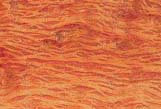
Rose sheoak is an australian (Queensland) timber that I have seen only a few times in my travels to wood yards. Not surprisingly, there is some confusing information concerning "sheoak" on the web. It resembles lacewood and at least one source on the web mislabels sheoak as cardwelia. Corkill identifies sheoak (also Shea Oak) as Casuarina. Rose sheoak appears to be one of several species of casuarnia, with individual species carrying a prefix such as "rose", "black", and so on. Sheoak is heavier and tougher than lacewood, and deep red to red-brown. It has large, distinct medullary rays similar to lacewood, hence the confusion.

Snakewood, as the name suggests, exhibits a very unique figuring not unlike some kind of spotted snake. It is incredibly heavy, hard, and takes a gem-like finish. It is outrageously expensive and is very difficult to season, resulting in boards that are often small, cracked, containing pith, or some mixture of the three. On the odd occasion one can be found large enough for a fingerboard, and very, very rarely one can be had wide enough to do a top. Do not hold out hope that you will be lucky enough to secure a top unless you want to spend a long time searching.

Spanish cedar is a lightweight and stable wood used commonly to make cigar humidors. It makes excellent bass bodies due to its light weight and ringing resonance. Density in this wood can be medium-light all the way down to "ridiculously light". The dust is very fragrant and fine and tends to irritate. The dust also manages to find its way into the mouth frequently and tastes awful. I have seen spanish cedar with flame and blistered/pomelle figure.
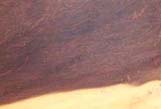
There are many species in the swartzia genus. They are all dense and hard and dark in color. Katalox (swartzia cubensis) is a dark brown/purple color, wamara is nearly black, and brazilian ebony is black with red highlights. The sapwood is cream colored and is not generally trimmed leaving a pleasing contrast in the lumber.

Sycamore is a name that can cause great confusion. This is because in the UK, they call what we in the US call maple sycamore. There is in fact a species of maple (acer pseudoplatanus) that we here in the US call the sycamore maple. Sycamore properly refers to the genus platanus in the US where the trees can grow to tremendous dimensions and enjoy lives hundreds of years long. The lumber ranges from light cream color to red-orange, with each board running generally running the gamut. The ray-fleck pattern is very pronounced, making sycamore a unique and handsome wood.
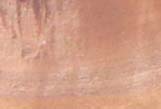
Tasmanian myrtle is a nice Aussie wood that is a mellow pink colored when rough but takes on a orange tint when finished. It is not quite pink, not quite orange, producing an interesting in-between coloration. It has faint grain lines and can be found in nice, uniform, quartersawn boards. I have seen this species exhibit mottle and curly figure.

Teak is a wood often overlooked in guitarbuilding. It's ubiquitousness in marine applications (it is weather-resistant) gives it both a common appearance and a premium price. The wood, however, can bear a striking resemblance to goncalo or even koa; it can occasionally be found with curl or flame figure in which case it is a bargain. The wood is very oily, almost waxy in texture, making it difficult to glue and finish.
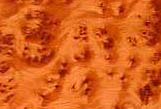
Thuya is most often seen in the states as thuya burr. These are big fat root balls that are dug out of the ground in Morocco, dipped in wax, and shipped to exotic wood dealers. Care must be taken to saw thuya burls to produce the most desirable figure types. It can be stunningly beautiful (and expensive), with a golden-brown color and swirls of burled figure.

Tigerwood is often used more or less interchangably with goncalo alves. These woods are from the same genus but there does appear to be a discernable difference in my limited experience. Goncalo is generally more orange to peach colored while tigerwood has a more tan-brown appearance. These woods exhibit the same dark, irregular streaks and on occasion three-dimensional flame, mottle, or curl figure.

Not as dense or tough as american black walnut, tropical walnut is a quick-grower with consistent, straight grain. It is not used too much is bass-building, but it could be if you like it.

There are a couple of black walnut varieties in north america. The most widely available is nigra, which is common throughout most of the US and southern canada. Claro walnut, a species with a redder color, grows in the western US, and can be found exhibiting curl and burl figure. The nigra species is rarely found with significant figure. It is, however, a dark, lustrous brown and makes a handsome addition to bass guitars, either as a neck or body wood.
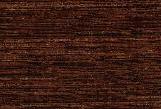
Wenge is a very curious looking wood. It almost looks fake. It's very dark in general but has some lighter colored fibres that are lighter brown in wenge and can be yellow to orange-yellow in panga panga (stuhlmannii). It's hard, though, and fairly open-grained. It is stiff and gained significant popularity as a neck wood when some of the high-end manufacturers featured it. Since then, its availability has taken a big hit due to political instability in its native range. As a result, its price has gone up and the larger scale manufacturers have shied away from it, though it remains a popular for custom instruments.
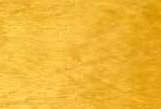
Yellowheart is... yellow. There is no other way to describe it as it is the undisputed yellowest of yellow woods. In terms fo texture and density, it is similar to purpleheart or bloodwood. It can exhibit interesting figure occasionally. It's bright yellow color is very distinct but makes it difficult to find the proper occasion to use it.
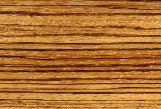
Zebrawood is hard and heavy, and splintery. It's name obviously comes from its striped appearance, with drank brown streaks through straw colored wood. It is most commonly cut on quarter, yielding tight, parallel grain patterns, but is sometimes found rift or flat sawn where the streaks widen out and follow irregular or cathedral-type lines. Smells like burnt spaghetti sauce to me when milled.

Ziricote is a dark, dense and oily wood. It often shows spiderwebbing and other interesting grain patterns including ray-fleck designs on quartersawn sections. Lumber can only rarely be found in wide and long boards, but this makes an attractive top or fingerboard wood.